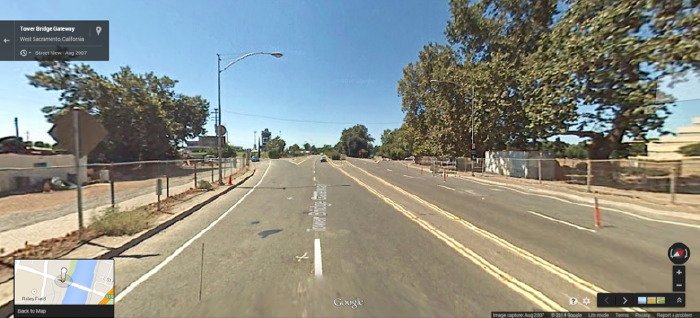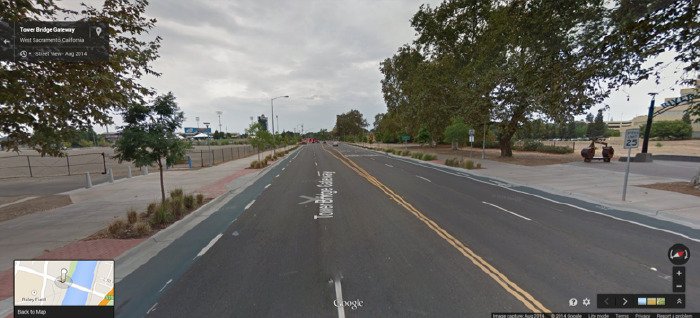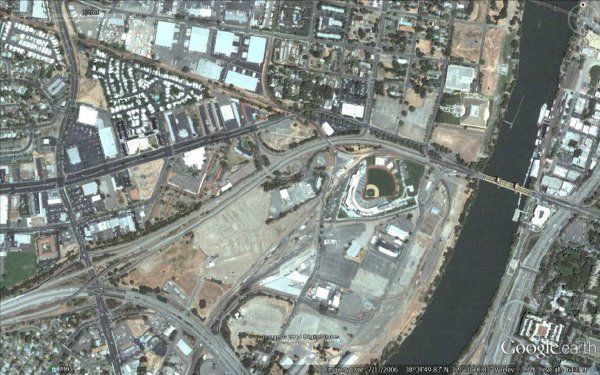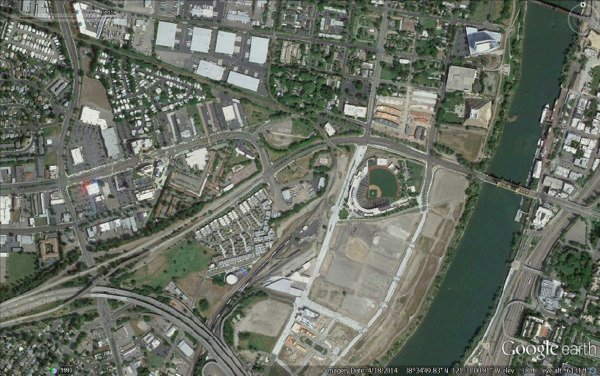The removal of the CA-275 freeway in West Sacramento has sparked a remarkable urban transformation. The new Tower Bridge Gateway has reconnected neighborhoods, boosted foot traffic, and paved the way for the development of the vibrant Bridge District. This project serves as a model for other cities looking to revitalize their urban spaces by removing underutilized freeways.

25 years after the Loma Prieta earthquake prompted the removal of the Embarcadero Freeway in San Francisco, cities are increasingly following San Francisco’s template for urban revitalization. One interesting story of freeway removal and rebirth is emerging in the city of West Sacramento.
Three years ago, West Sacramento completed a new boulevard to replace a short freeway spur that linked the Tower Bridge with US-50. The Tower Bridge Gateway boulevard has opened West Sacramento’s riverfront to develop into a new urban neighborhood.
The old CA-275 freeway served little functional value – it was essentially an extended onramp/offramp into Downtown Sacramento that carried low traffic volumes. However, its effect on the adjacent neighborhoods and their access to Downtown Sacramento was toxic.
Even though West Sacramento’s riverfront was ¼ mile from Old Town and Downtown Sacramento, walking and biking was more or less unreachable. It featured narrow, overgrown sidewalks and forced bicyclists to ride alongside fast-moving cars.
Tower Bridge Gateway fundamentally reshaped access between West Sacramento and Sacramento. Green bike lanes, wide tree-lined sidewalks, slower vehicle speeds, and a restored street network have reunited previously disconnected neighborhoods, the riverfront, and Downtown Sacramento. Foot traffic across the bridge has increased exponentially as crowds of Sacramento Rivercats fans can now easily walk to Raley Field from Downtown Sacramento.
These before/after images illustrate the transformation of CA-275 into Tower Bridge Gateway:




The most dramatic effects of the freeway removal are yet to come. South of Raley Field, in what’s known as the Bridge District, 1,000 apartments are already under construction. At full buildout, the district is expected to have 10,000 residents, retail, office, and open space, plus a streetcar connection to Downtown Sacramento. To its north, the Washington District is also expected to experience considerable growth.
The removal of CA-275 and subsequent redevelopment of the Bridge District occurs at an exciting time for the Sacramento region. Across the river, a new basketball arena is under construction for the Kings – a project expected to breathe new life into Downtown Sacramento and further support the ongoing revitalization that has already taken root in the Midtown district.
North of Downtown, Sacramento’s Railyards District may also become home to a new soccer stadium for an MLS expansion team and more housing, offices, and shops.
While the full effect of these redevelopment efforts may take time, it is clear that Sacramento and West Sacramento are setting the stage for a future of vibrant, walkable urban neighborhoods that expand housing choices and support implementing California’s Climate Change goals, notably SB-375.
The conversion of CA-275 into Tower Bridge Gateway is California’s latest example of freeway removals. San Francisco, which has already replaced the Embarcadero Freeway and part of the Central Freeway, is now considering removing part of I-280.
Long Beach is also looking at removing the Terminal Island Freeway. And advocates are throwing around ideas for more, like I-980 in Oakland. These projects share similar characteristics: they carry relatively low traffic volumes, consume significant amounts of valuable land, and create blighted, noisy, polluted barriers between communities.
Yet, there remains a lot of skepticism around whether freeway removal projects will work (see: Seattle’s Alaskan Way Viaduct). West Sacramento provides another worthy example of a bold vision that will pay dividends for decades.
West Sacramento’s bold decision to remove the underutilized CA-275 freeway and replace it with the Tower Bridge Gateway stands as a compelling testament to the power of urban revitalization.
This transformation has demonstrably improved connectivity, fostering a more walkable and bike-friendly environment that has directly benefited residents and businesses alike. The exponential increase in foot traffic and the burgeoning development of the Bridge District underscore the profound positive impact of prioritizing community access and thoughtful urban planning over outdated infrastructure.
The success story of West Sacramento offers valuable lessons for other cities grappling with the negative consequences of intrusive freeways. By reclaiming valuable land and reimagining urban spaces, communities can unlock new opportunities for growth, enhance quality of life, and align with broader sustainability goals.
As seen in San Francisco and the ongoing discussions in cities like Long Beach and Oakland, the momentum behind freeway removal projects is building, driven by the recognition that these transformations can create more vibrant, connected, and livable urban environments.
Ultimately, West Sacramento’s experience highlights the potential for strategic infrastructure changes to act as catalysts for significant positive change. The blossoming of new neighborhoods, the improved accessibility to downtown Sacramento, and the anticipation of further growth demonstrate the long-term dividends of such forward-thinking initiatives.
As the Sacramento region continues its revitalization efforts, the story of the Tower Bridge Gateway will undoubtedly serve as an inspiring example of how removing barriers can pave the way for a brighter, more interconnected urban future.



 AI-search
AI-search  Email
Email